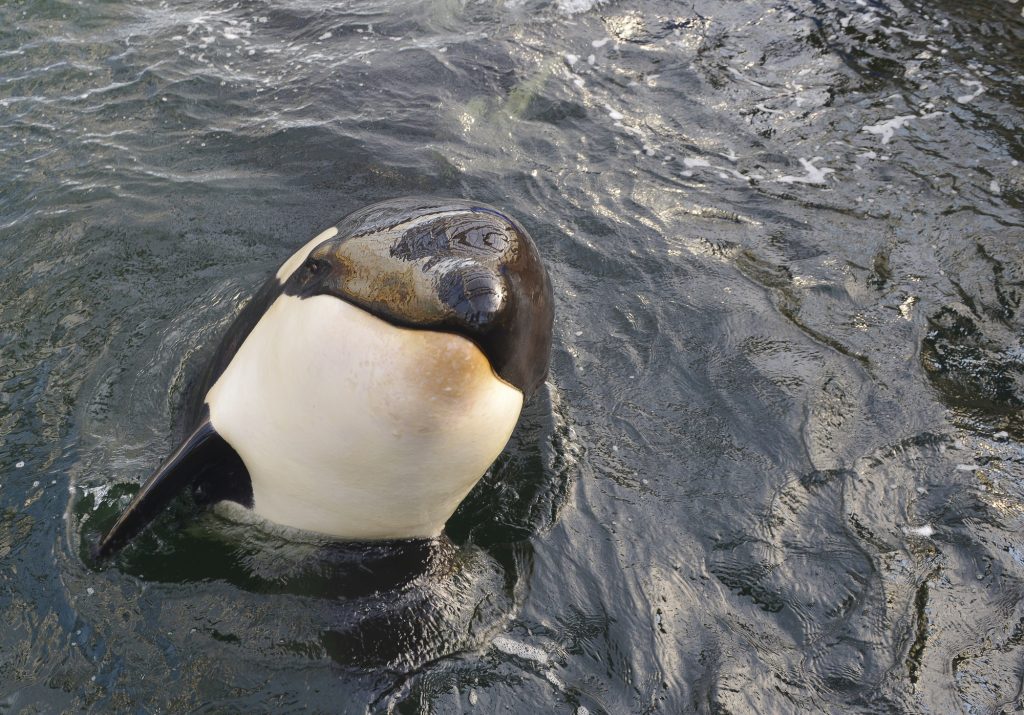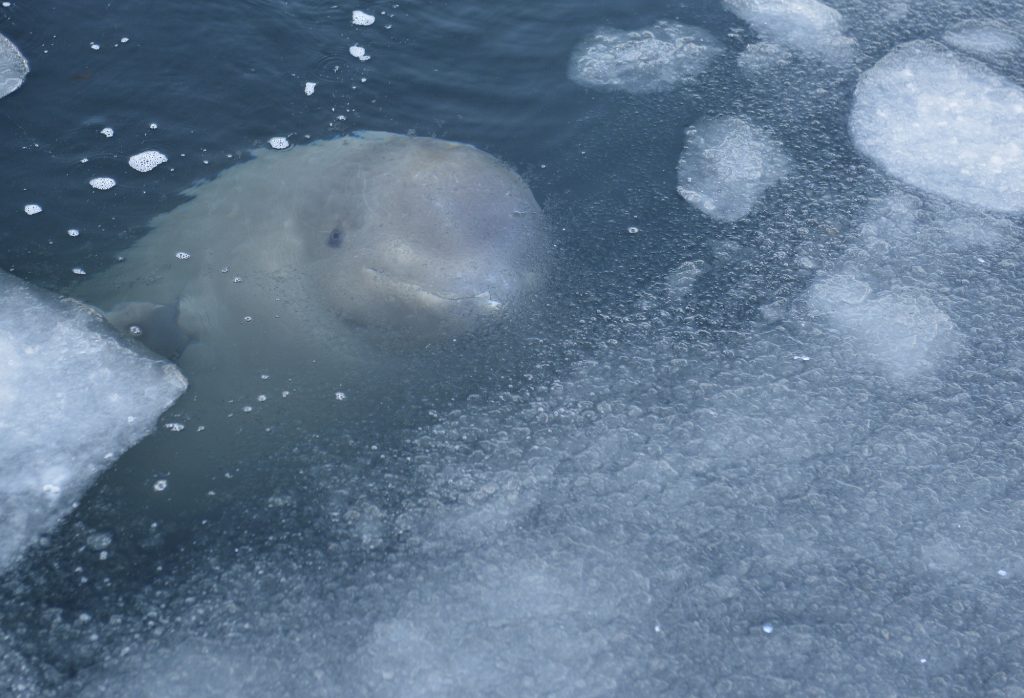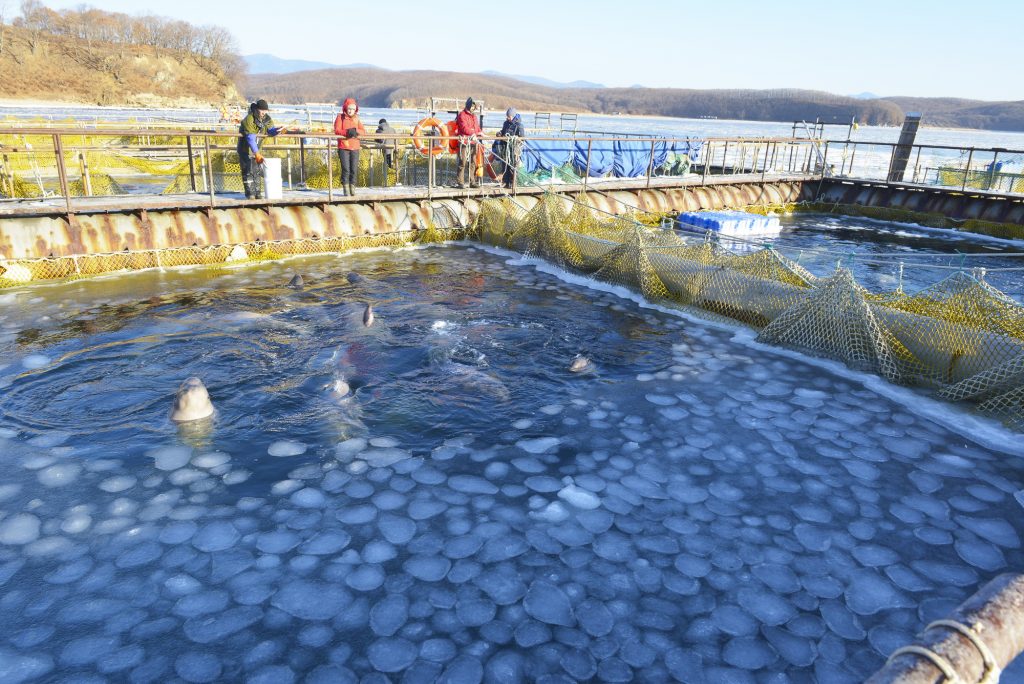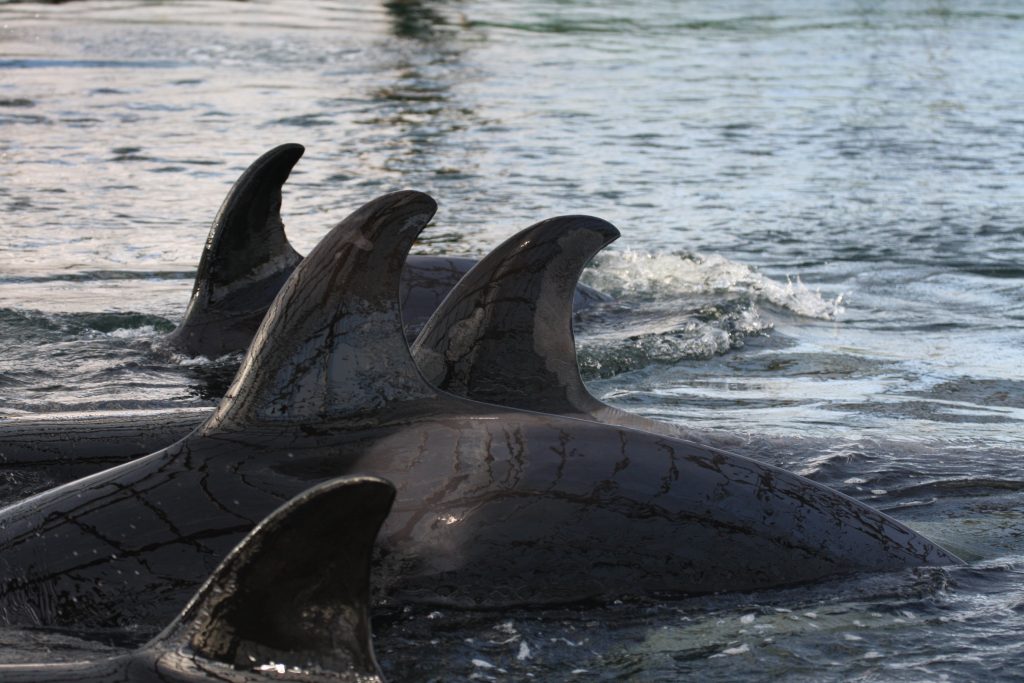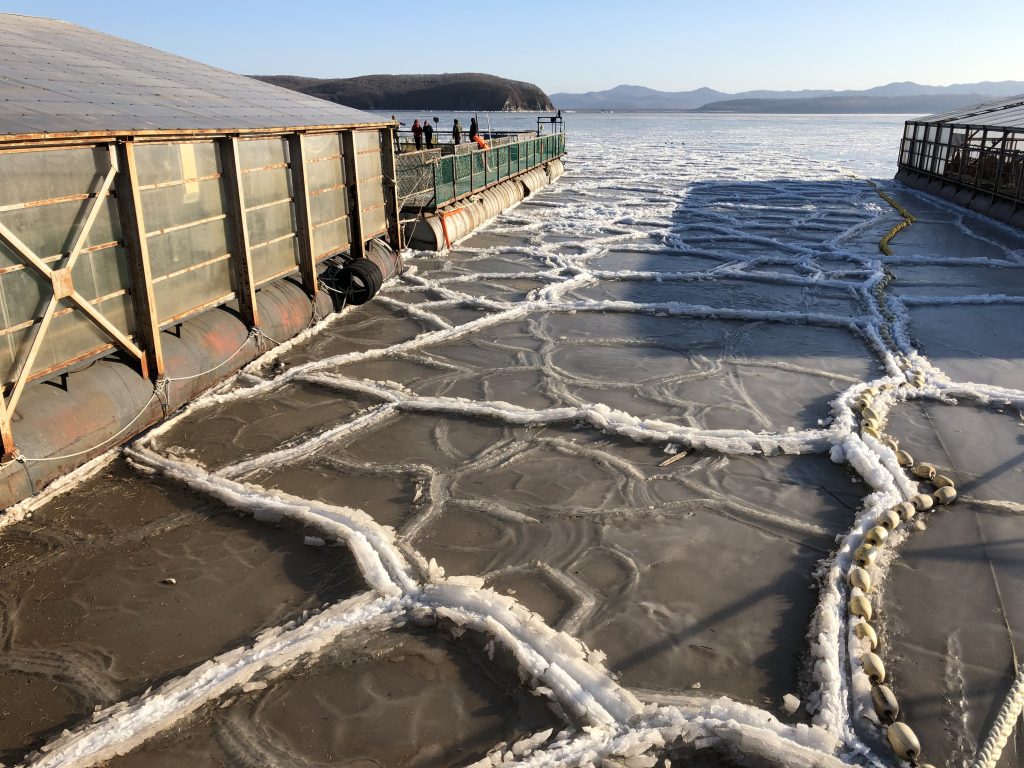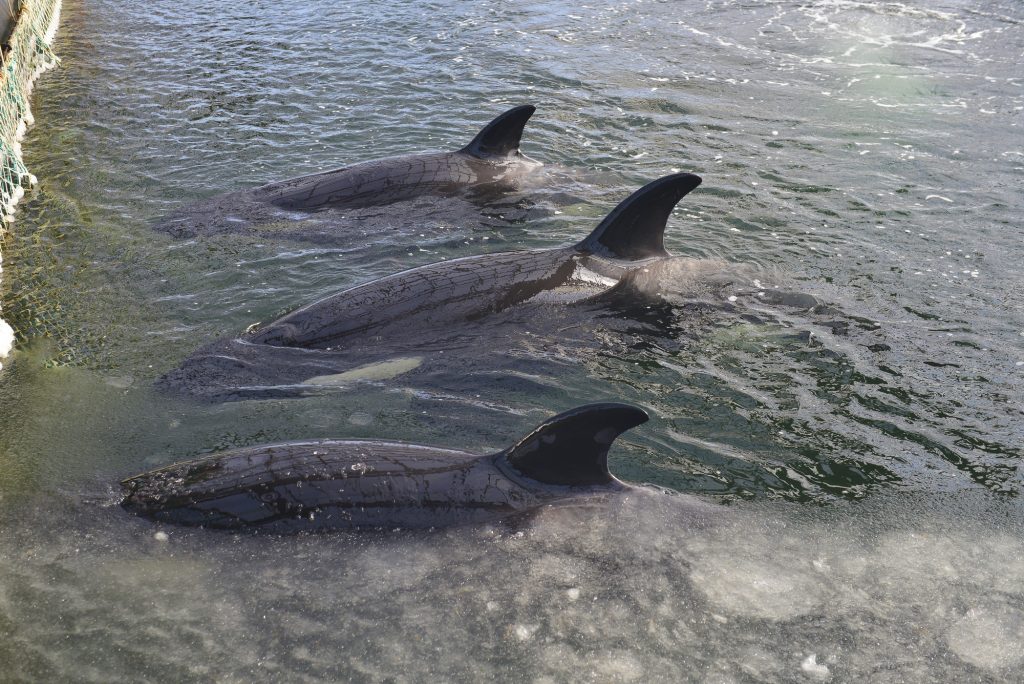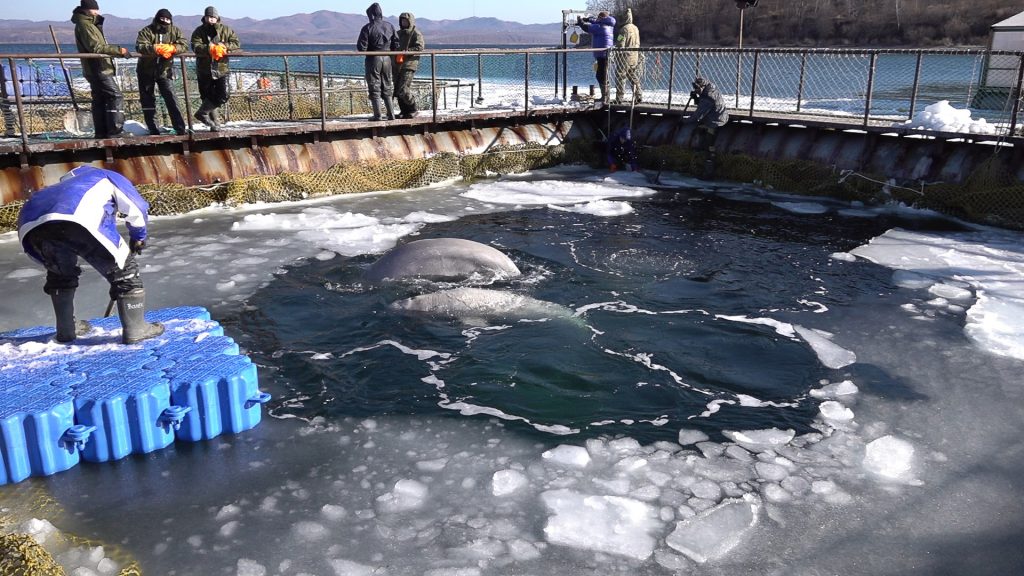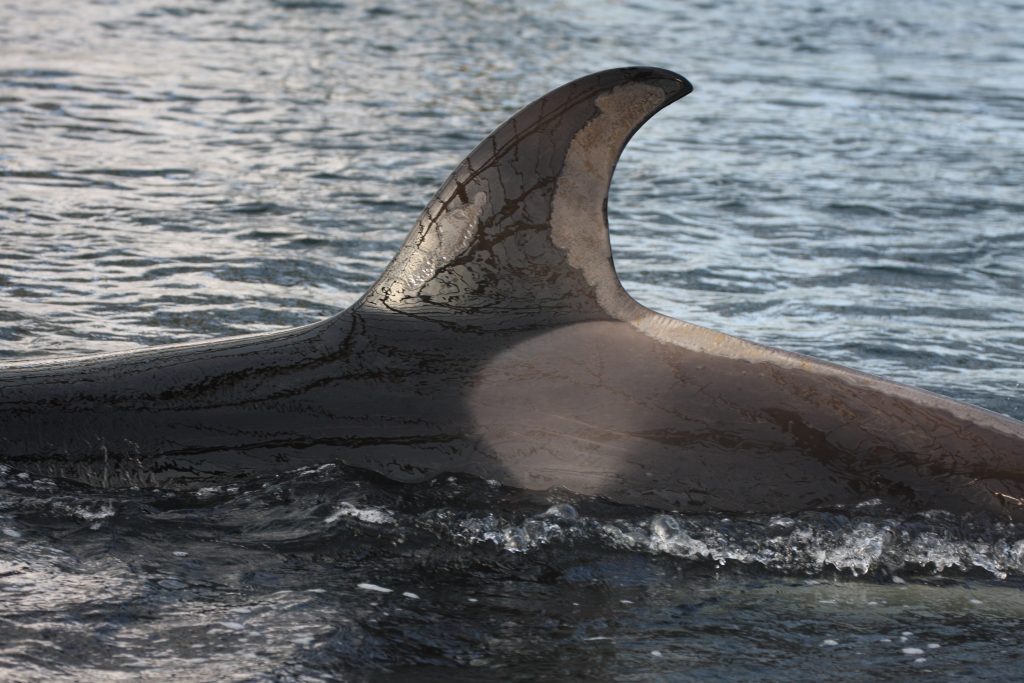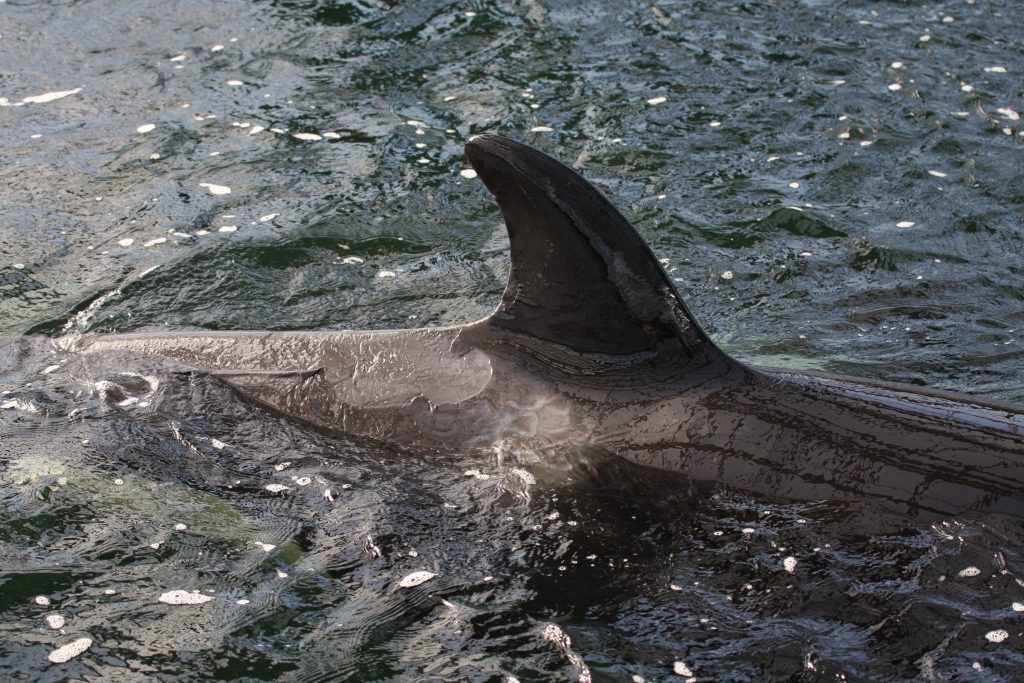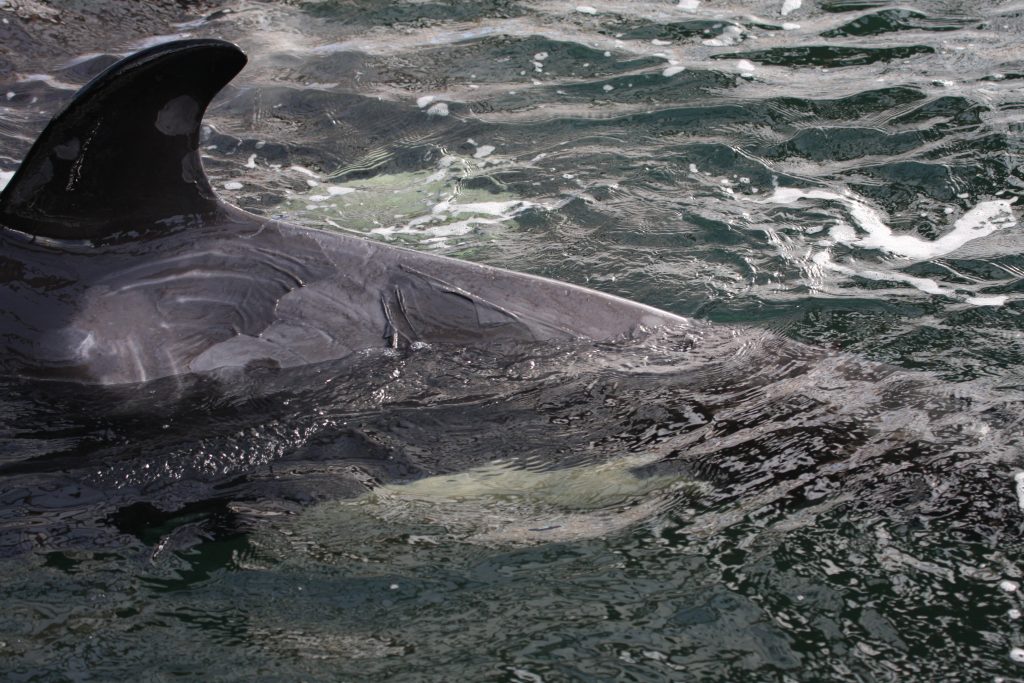PRELIMINARY RESULTS OF AN EXPERT EXAMINATION OF ORCAS AND BELUGAS HELD IN THE “ADAPTATION CENTER” AT SREDNYAYA BAY
BORDER CONTROL WITH RUSSIAN SPECIALISTS BEGAN A TWO-DAY EXAMINATION OF ORCAS IN SREDNYAYA BAY IN PRIMORYE
22.01.2019FEARS KILLER WHALES HELD CAPTIVE IN RUSSIA WILL FREEZE TO DEATH AS WINTER SEAS ICE OVER
27.01.2019PRELIMINARY RESULTS OF AN EXPERT EXAMINATION OF ORCAS AND BELUGAS HELD IN THE “ADAPTATION CENTER” AT SREDNYAYA BAY
P
January 24, 2019. At the end of last week a team led by the local Border (Coast) Guard Service of the Federal Security Bureau (FSB) of Russia went out to assess the “center for the adaptation of marine mammals” in Srednyaya Bay, near Nakhodka (in Primorsky Krai)—a site that is better known as the “whale jail”. Leading Russian experts in the fields of biology, ecology, veterinary medicine, and cetacean behavior in captivity were also involved in this team.
It should be noted that an earlier assessment of this “adaptation center” was conducted exactly a month prior (on December 19, 2018), with the help of other specialized experts. It had been organized by the Primorsky Office of the Investigative Committee of Russia, which then reported that all animals were in good condition—although the number of beluga whales was three less than earlier reported. The December assessment claimed that nothing was threatening the life or health of the remaining whales. The same representatives of this Investigative Committee also noted that the bay, in which the animal enclosures are located, does not freeze over in winter.
On January 18-19, 2019, experts were invited by the Primorsky Coast Guard to inspect the killer whales and belugas, as well as the enclosures in which they are kept. A considerable amount of data was collected, including: skin samples from all 11 killer whales (for genetic research); samples of exhalations and skin smears from damaged areas of the body (to detect any pathogens); water quality samples from the pens; and recordings of vocalizations (or animal speech). In addition a large number of photos and video footage was taken for subsequent thorough analysis.
At the time of the inspection, Srednyaya Bay was not really frozen over. But the entire “adaptation center”, together with the adjacent water area, was completely covered with dense ice measuring several centimeters thick. This is a big problem for all the enclosures (both the open pens, with the belugas, and the closed ones, with killer whales). The “center” staff were seen to spend a tremendous amount of time trying to get rid of the ice. They are forced to use heat guns and compressors, which are used to accelerate water movement and manually remove the ice from the enclosures on a daily basis. The belugas are accustomed to living in icy conditions; but they are absolutely not used to this constant splitting and clearing of ice by people in close proximity. This work is certainly causing anxiety, and is a potential source of severe stress for the animals, as evidenced by their behavior. Thus, during a check in one of the small enclosures with the belugas, it was noted that 12 people simultaneously were chipping ice and throwing pieces over the fence. And in these pens the animals were spending much more time under water during this process, and were moving noticeably less actively, than whales in the neighboring enclosures.
In the process of their evolution Beluga whales have adapted to colder climates. They lack dorsal fins (other cetaceans lose heat through this “cooling” fin, mainly because it does not have a fat layer). Orcas on the other hand are not so cold-resistant. Under natural conditions, these killer whales of the northwestern Pacific are not observed around ice. Yet in the open-air cages here in the “adaptation center” they are forced to come into direct contact with ice—a fact which probably has some effect on their health.
Several females (given the names of Zina and Gaika), as well as one male (Tikhon) show noticeable and unusual (for orcas) evidence of mottling and other changes in the skin of the dorsal fin and spinal areas. There were similar anomalies (but often larger and more pronounced—with serious peeling away of the skin) noticed in other orcas – the females named Zoya, and the youngest Alexandra, as well as in the male named Leha. However, one whale named Kirill stands out in this regard – the skin on the fin and upper back area behind his fin is peeling off in large, flapping chunks.
Or course, changes in the surface of the skin may often be associated with molting – a natural change to the outer layers of the skin. Molting of big pieces of skin was observed in bowhead and sperm whales, but it is very rare for killer whales. In this case, the abnormalities of skin may be due to external thermal injuries (from hypothermia and frostbite). In fact, this is quite likely, given that the temperature drops in the tented enclosures every night, with shallow ice and slush accumulates, despite all the efforts of the workers at the center to prevent icing over. It was seen that the killer whales also have rounded skin lesions, which could be due to fungal diseases. Samples taken from animals (skin smears) will soon allow us to more accurately determine the presence of any skin diseases.
There are many cracks and scrapes on the skin of the orca named Leha, injuries that could have been obtained while loading and unloading the animals. These scratches are seen between the pectoral fins, and on other parts of the lower body surface. Other killer whales may also exhibit similar scarring— but it was extremely difficult to inspect the abdominal underbelly of all the whales.
It should be noted that the experts who checked on the “adaptation center” last month had previously noted that the animal skin had almost no noticeable damage. This means that the condition of the skin in at least 6 out of the 11 killer whales has deteriorated.
The general physical condition of the majority of killer whales can be called generally satisfactory. But Kirill’s condition is of great concern. He is completely inactive, looks sick and floating motionless for long periods of time. He often comes into contact with the icy sludge, possibly causing hypothermia with more pronounced damage to the skin that is manifest with Kirill. His breathing is very slow and “gentle”, which can be a sign of pneumonia or other diseases of his internal organs. Next to his dorsal fin, markings on the skin similar to injection punctures may indicate that therapeutic procedures were used on this whale. The state of health of all the animals will be clarified by tests done on the skin samples and exhalations—tests which often take a good deal of time to complete.
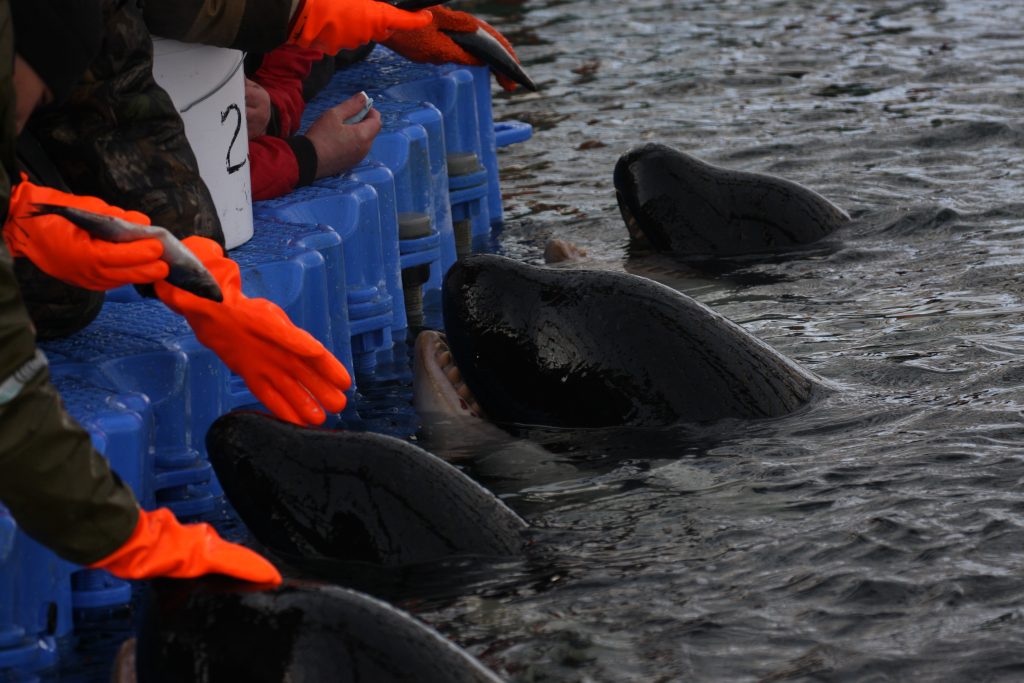
The killer whales are divided into three groups of 3, 4 and 4 animals. They do communicate with each other and, possibly, with animals from neighboring enclosures. All the animals are eating food, and are given herring and pink salmon, which is generally acceptable forage in captivity. Nevertheless, this is not normal food for these killer whales, since they are likely to belong to the transient populations of orcas that in natural conditions feed on other marine mammals (such as seals, and sea lions, and even other whales).
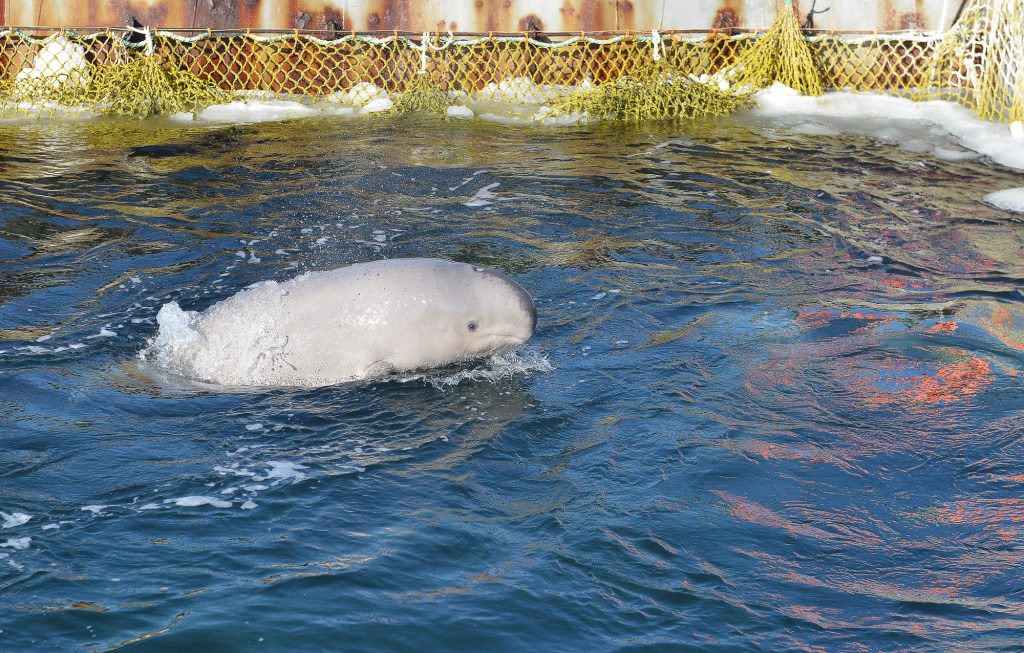
Visual inspection of the belugas showed that their number has not changed since the last inspection. There are still 87 individuals. Once again these beluga whales are showing anomalies in their appearance—although not as pronounced as in the killer whales. For many of them, in the area of the back of the head, neck and breathing hole, there appeared a lot of strange dark spots, which is usually not observed in beluga whales that are kept in captivity in aquariums. One beluga whale showed signs of losing weight — a marked reduction in the fat layer appeared around the neck, which is not characteristic of a healthy, normally feeding animal. But in general, according to preliminary visual data, the general condition of the belugas is estimated as more favorable than the killer whales. They all take on food – also herring and pink salmon. It should be noted that, among the belugas, there were younger animals aged up from under a year to 3-4 years of age. The number of individuals born in 2018, the so-called “juveniles” at the time of capture, will be clarified after a thorough analysis of the photos and videos.
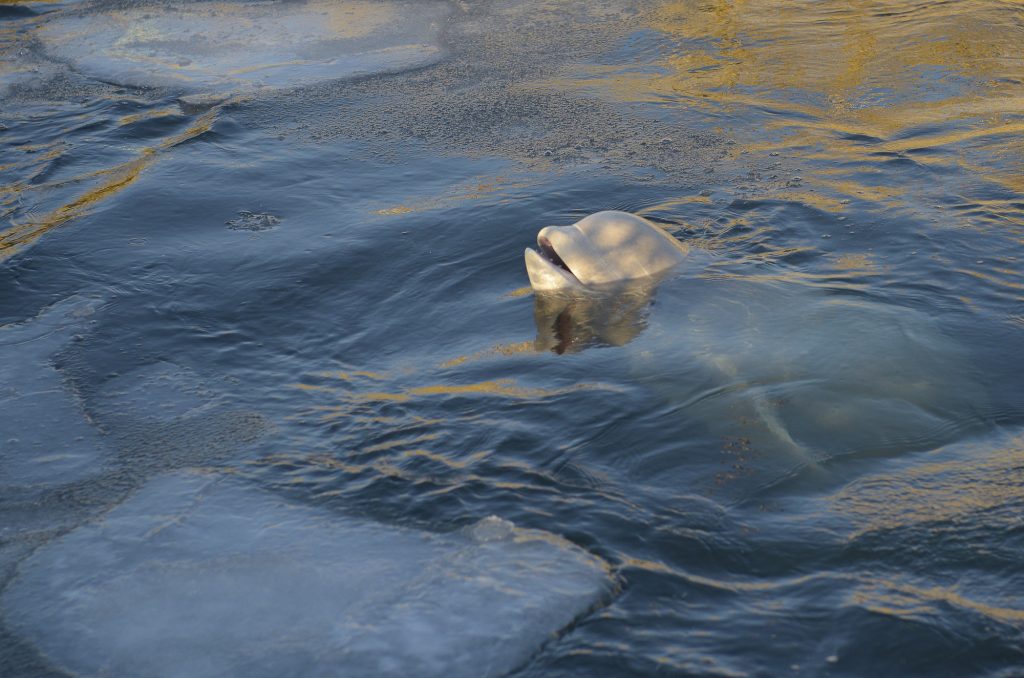
One particular threat to the animals’ health was noted by the experts: a complete absence of any sanitation facilities or any measures in this “adaptation center” aimed at preventing pathogenic microorganisms from entering the animal enclosures. There were no disinfecting barriers or any decontaminants or disinfectants applied at any of the entrances to the “center” as a whole, or at any entrances to the individual pens.
Also, there is no separate entrance for each of the pens; the passageway to all the enclosures leads only through the first enclosure with the killer whales, where Kirill, Alexandra and Vitas are kept. Every day a lot of “center” staff pass by, dragging their various equipment, ice-cleaning tools and heavy wheelbarrows with fish, likely causing more anxiety and stress for the killer whales.
Experts will give more detailed and substantiated conclusions later, when they process all the information obtained at the site, and conduct their research on the collected samples.
High resolution photos: https://yadi.sk/d/d7bOza_BzjI5jA
Video and audio (vocalization – shouting and communication) of killer whales and belugas: https://yadi.sk/d/HbYduUgTh7Ijzg
More high resolution videos: https://drive.google.com/open?id=1MApwrVVQlObUvMhz_R6Q-YqbYgHSHug3
All photos and videos are the property of the public campaign known as: “Free Russian Whales” and could be shared publicly without written consent.
For more information about the campaign “Free Russian Whales” please see: http://freerussianwhales.org/
————————————————
Press release published by the
Regional public organization “Sakhalin Environment Watch”
Sakhalin Regional Public Organization Club “Boomerang”
Regional Public Organization “Ocean Friends”
Rehabilitation center of marine mammals “Seal”
Scientific and Ecological Center for the Rescue of Dolphins and Other Marine Mammals “Delfa”
For additional Information, please contact us via email freerussianwhales@gmail.org or phone:
“Sakhalin Environment Watch”, Dmitry Lisitsyn +7 924 190 1022 sakhalinwatch@gmail.com
“Ocean Friends”, Vyacheslav Kozlov +7 914 756 7246 boomerangk@mail.ru


